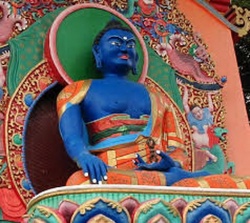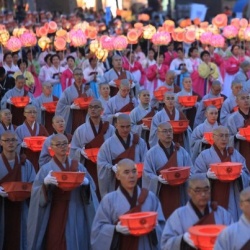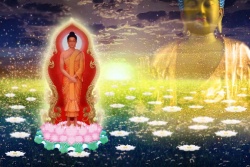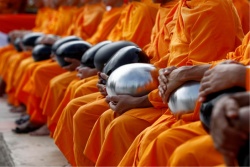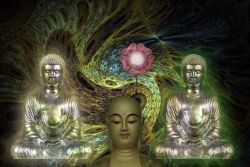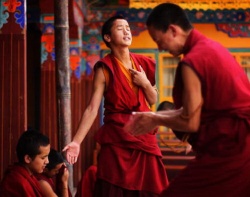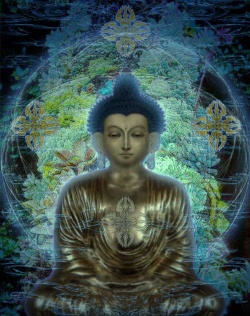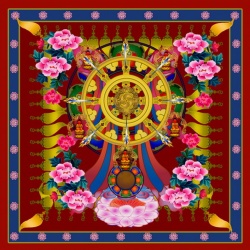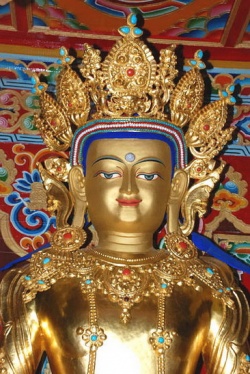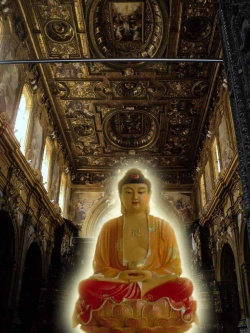Trekking in Pemako, Secret land of Guru Rinpoche
Situated in the eastern nook of India, surrounded by China, Bhutan and Myanmar on its three sides, Arunachal Pradesh is a land of rugged grandeur whose snowy peaks like Kangto (7090 mts), Nyegi Kangsang (7050 mts), Gorichen (6488 mts), Chomo (6000 mts), etc are gorged through roaring rivers and swift streams. It offers a breath-taking spectacle of Nature's glory in a wild profusion of flora, fauna and people abounding in a variety of tribal customs, culture, language and dress. Endowed with unsurpassed beauty. Arunachal Pradesh was, until recently, the hidden frontier, existing in splendid isolation. The magnificent landscape in its un spoilt glory is now accessible and open to tourists, travelers and adventure lovers.
Day to Day Itinerary
Day01 : Reporting & Registration at Guwahati Base Office. Night halt in Guwahati Hotel.
Day02 : Drive to Bomdila 340 km. Depart 8 am Arrive 5 pm. Night halt in Bomdila Hotel.
Day03 : Orientation and drive to Dibin 73 km. After lunch trek 4 km to Matho Village Camp.
Day04 : Trek to Pangma 7500 ft. 14 km. Night halt in Pangma Village Camp.
Day05 : Trek to Chander 9200 ft. 7 km. Night halt in Chander Village Camp.
Day06 : Trek to Namthung 5000 ft. 10 km. Night halt in Namthung River Camp.
Day07 : Trek to Dirang 5500 ft. 7 km. Night halt in Hot Spring Tourism Camp.
Day08 : Drive to Tawang 10000 ft. 145 km. Night halt in Tawang Hotel.
Day09 : Drive to Bhalukpong 600 ft. 285 km. Night halt in Bhalukpong Hotel.
Day10 : Drive to Guwahati 240 km. Program ends
http://www.amasa.in/itinerary.html
Pemako is very special; it is a hidden land, a sacred place. The Pemako region spreads from Tibet into upper India and it is the body of Dorje Phagmo. The mountains, the rivers, the valleys are her body. Our school is near the birthplace of Dudjom Rinpoche and right next to the womb space of Dorje Phagmo it is very sacred.
Many great masters fled to Pemako after the Chinese invaded Tibet and it was also the birthplace of H.H. Dudjom Rinpoche. Many Terma speak about the special qualities of Pemako. For instance in a Terma discovered by Chogyur Lingpa and rediscovered by Khamtrul Rinpoche it says, "In future times, at the end of the turbulent and wicked age, there will arise a time when Vidhyadharas of intrinsic awareness will flee their homelands from foreign invaders who incite great trepidation and fear in the hearts of our people. Out of all mystic places, that which is most pre-eminent and supreme amongst the hidden valleys is the Beyul Pema-ko - resplendent like an immaculate lotus flower."
'Hung! I prostrate to you Dorje Tho Treng Tsal.
In future times, at the end of the turbulent and wicked age, there will arise a time when Vidhyadharas of intrinsic awareness will flee their homelands from foreign invaders who incite great trepidation and fear in the hearts of our people. Their longing will guide them to pilgrimage to distant hidden lands and will find refuge amongst the secret valleys to the south in the land of Monyul. There are myriad enumerations of short and long-winded tales of these most blessed of lands however, the account I have written here is a concise summary of my own.
Our legends tell us that Tibet, the Land of Snows is analogous to a supine ogress outstretched on her back. In the upper torso of her body lay the heart of Ngari, and Tsang. In her lower torso are the legs of Do Kham, China and Mongolia. In her secret place is Er Lang Ri and her head arises as the immaculately pure glacial snows of Mount Kailash. In her cardinal and intermediate directions, she is surrounded by the twenty-five sacred Neychen containing the mysterious and unknown abodes of the gods. Out of all of these obscure and mystic places, that which is most pre-eminent and supreme amongst all the hidden valleys in the Land of Snows is the Beyul Pema-ko - resplendent and agape like an immaculate lotus flower.
It is from this then, from the center of China and Mongolia, Do Kham, U and Tsang that the wondrous body of the sublime Dorje Pagmo arises. Her head is renowned as the, "glorious mountain" south of Kongpo. Her neck is Pema Dzong and Orgyan Puk and her heart is the spontaneously arisen palace of great bliss. Her navel is Trakar Tashi Dorje Dzong and her secret place is a mountain of crystal lotuses. All of these are the wondrous display of the three channels and five chakras of her Vajra body. Furthermore, arrayed in the ten directions surrounding her form are the Beyuls of Yagu Lung and the glorious Beyul Dre-mo 'jong (Sikkim). In addition to these realms which emerge from her wondrous display are the five large valleys and six continents of Arya Jong, Go'o Jong, Khenpa Jong and Bachak Sher-ri Jong each of which are the five types of spontaneously arisen grains and cereals.
In the future, as the complex necessities and riches of the world increase, there will remain two great Neychen into which the foreign invaders will fail to reach. These are the Beyul Dre-mo 'jong (Sikkim) and the Beyul Pema-ko. Contained herein is a concise guide for finding their door and entering their valleys here in the Land of Snows.'
Read more at :
http://www.snowlionpub.com/pages/N64_20_2.html
For nearly 2000 years, the notion of an earthly paradise or Shangri La hidden among the peaks of Asia has captivated the human imagination. Western explorers combed the region in search of this hidden land of bliss and nectar described in ancient Buddhist texts as the Pemako or the Lotus land.
According to Buddhist tradition Pemako is one of the 16 earthly paradises, a promised land free of worry, the ultimate hidden haven. The place is where, it is prophesied that the seed of humanity will thrive at the end of the world in famine and calamities.
In the beginning of the 20th century, many Khampas from Tibet made the long, arduous trek to Pemako in quest of succor and refuge. They are one of the major inhabitants of the region, along The Adis, Mishmis who were the original inhabitants here. The region is a melting pot of different tribal cultures, where all the tribes exist in complete harmony among themselves and the nature. Walking through pemako one can see Adi, Memba, khampa and Mishmi villages with their distinctive culture, faith and lifestyle.
The Pemako is consecrated to the female divinity of Dorje Phagmo and its sacred geography is mapped to the body of this sleeping Goddess. Her head is the Kangri Kangpo, her two breasts is Namche Barwa and Gyala Peri respectively. The lower part of her body lies in Yangsang or the innermost pemako which is the upper Siang region of Arunachal Pradesh. In the confluence of Siang (Tsangpo) and Yangsang is the sacred triangle Kila Yangzom the vulva of Goddess Dorje Phagmo. This the supreme of sacred lands is now open to the world to discover and marvel.
Every year pilgrims traverse the area on Kora (circumbulation). Covering the sacred Devakota, the gathering place of Dakinis, The holy Titapori mountain, Pemashree and Riu Tala (Eko Dumbing for Adis).
After an arduous trekking of 4 days one reaches the sacred Titapori Mountain at 14,000 ft. The landscape here forms a fully opened lotus. In the lake of Danakosha there is the Citta Island, ‘the heart of the world’. According to ancient pemako guide book; upon merely seeing this place ones obscurations of knowledge will be cleared and negative Karma accumulated over a thousand eons will be purified.
From here one have breathtaking view of the majestic Himalaya range with Namche Barwa peak and Kondu Dosem Potrang the mythical palace of Dorje Sempa in the north, the Pemashree and the Eko Dumbing or Riu Tala of the Abroka range towards west and south respectively.
It is a treasure trove of flora and fauna with all kinds of medicinal and aromatic plants and rare flowers. It is also a Rhododendron fairyland. 44 new species was discovered here in 2005. Wildlife: Goral, Takin, Musk deer, Snow leopard, Tiger.
The Adi hunters come to the high mountains in an annual expedition to collect aconite poison and offer their prayer and homage to the Deities of the mountain.
The region offers very challenging trekking opportunities for pilgrims, plant enthusiasts and bird watching.
Best period August to October.
http://www.aborcountrytravels.com/pemako.htm
HIGH PEMAKO TREK
Day 1 - Arrive at Guahati /Dibrugarh airport Day 2 - Drive to Pasighat. 7 hrs Day 3 - Drive to Jengging (2690 ft) 7 hrs Day 4 - Drive to Tuting (1493) 9 hrs. Day 5 - Trek to Kuging village (2786 ft) 5 hrs Day 6 - Trek to camp Mabi (7205 ft) 6 hrs Day 7 - Trek to camp Yungchak (7925 ft) 3 hrs Day 8 - Trek to camp Kanebenga (10795 ft) 5 hrs Day 9 - Trek to camp Pao Lipik (11959 ft) 6 hrs. On a clear day you can see the Namche Barwa mountain with its whole range. Day 10 - Danakosha (13123 ft). The sacred lake with the Tseta(heart) Island. Day 11 - Kora (circumbulation) of the 5 sacred lakes, each of which as believed, will give you Tantrik powers. On a good weather we can see the Kududusempedrong-the abode of Vajrasattava,Rinchinpong and the Beyul range etc. Day 12 - Trek to camp Wangchen Phukpa (13225 ft) 7 hrs. Day 13 - Trek to camp Dungchen Droma (12500 ft) 3 hrs. Day 14 - Trek to camp Tashi Droma (4663 ft) 8 hrs. Day 15 - Trek to Tashigang village (4961 ft) 4 hrs. Day 16 - Trek to the holy Dewa Kota circled by Yang sang river. After Kora and prayers trek to Mankota(3771 ft) 5 hrs. Day 17 - Trek to Nyukong (Adi village) 4109 ft. 4 hrs. Day 18 - Trek to Tuting. 5 hrs. Day 19 - Drive to Jengging. Day 20 - Drive to Pasighat. Day 21 - Ferry down to Dibrugarh on river Brahmaputra. Stay at colonial tea garden bunglow. Day 22 - Fly out to Delhi/kolkotta
Really the story begins many years ago when four friends, all Lamas, and I left Tibet. Upon reaching to India we made a vow together that one of us would someday start a school to preserve the special teachings and yogic practices of the Nyingma lineage. We made this promise to Dudjom Rinpoche. Now, many years later not all of us are alive and others are engaged in important work and so it has fallen to me to undertake this project. Really I am very lucky because to do such auspicious work in a sacred land such as Pemako makes one very fortunate. We are all very fortunate to be able to help the Buddha's teachings to flourish.
In many Terma Padmasambhava spoke of the special characteristics of Pemako as a sacred hidden land. To go there, to help the Buddha's teachings there, brings great merit. Two years ago when I began this work I went to the Supreme Head of the Nyingma Lineage, H.H. Minling Trichen Rinpoche, and he blessed our school with the name Lhundrup Topgye Ling. This year while in America my root Lama, Dungse Thinley Norbu Rinpoche, Dudjom Rinpoche's son, also gave very strong blessing for this project. So I am very lucky indeed to be doing this work.
When I came to the west I met many people who wished to help and now people from three continents and more than 7 countries have contributed to our noble project. We have built a school where there has been no school. We have built a nursery for small children and also a kitchen, which provides food for children and parents. We offer clothing and medical care as well. Just this year we have arranged for a medical camp to come to the region with doctors and supplies from the west. This sacred area of Pemako is so remote that it receives very little aide and these resources are much needed.
My goal was not to merely start a school but to help the whole community there thrive. Our vision must be holistic it must be very broad because we must make the whole community strong in order to save these precious teachings. As Buddhist we must have impartial compassion and love for all beings not only those who look like us or have our nationality. For this reason we offer the school, the nursery, the aide, to all people in the region both Tibetan refugees and local children. In this way the school will be built on a strong foundation and continue into the future after we are all gone. Guru Rinpoche's tradition is for everyone!
Lopon P. Ogyen Ten'dzin Rinpoche comes from the family lineage of Pema Lingpa and was a long a time student of Dudjom Rinpoche. He has studied with many of the greatest Lamas of his generation and now strives to preserve these teachings through a variety of activities. Rinpoche served as head of the Nyingma Students Association at the Institute of Higher Tibetan Studies in Varanasi for many years, is founder of the Boddhicitta Foundation - a non-profit aide group in India and is now director of the Pemako Project in India.
LHUNDRUP TOPGYE LING NGAKPA DRATSANG SCHOOL IS UNIQUE Recognizing interdependence: Education does not take place in a vacuum. Efforts to meet local needs for medical care, infant care, food and clothing complement the school’s initiative and create an environment where grass-roots support and community involvement insure long-term success.
The school is a traditional ‘dratsang’, where the spiritual, academic, artistic and cultural treasures of the Tibetan people are passed from generation to generation. Blessed and named by the Supreme Head of the Nyingma Lineage, H.H. Minling Trichen Rinpoche, it upholds the Gokar-chang-lo’i-dé, the culturally vital non-monastic lineage of ngakpas representing one of the two original streams of Buddhism in Tibetan history that has flourished in Tibet since the 8th century. Following the Chinese occupation of Tibet it is in danger of extinction unless efforts are made to pass it on within the Tibetan community outside its homeland.
Offering aid to those who would otherwise be missed: Because the Pemako region is remote, little aid reaches the Tibetan refugee populations and the region is often ignored. Girls are generally denied education in order to baby-sit younger children while parents work the fields. The Lhundrup Topgye Ling Foundation gives particular importance to creating a framework conducive to the education of girls.
Cultural preservation means cultural diversity: Sadly, despite the best of intentions, large-scale relief efforts often overlook smaller but vital aspects of an endangered culture. The Lhundrüp Topgyé Ling Ngakpa Dratsang School is the only school working to save the ngakpa tradition within the exiled Tibetan community.
http://www.namchabarwa.org/school.htm
Homage to the guru who reveals the secret pathways
To the hidden land at the centre of my heart
Where resides the eternal teacher
Beyond all birth and death –
Ever serene and radiant
To you I pray:
In all my lives may we come face to face,
May my mind be always merged with yours!
May my prayers turn towards you
In times happy and sad!
May your blessings pour upon me
And your teachings be my only light!
http://www.nyingma.com/ogyan-cho-khor-ling/A%20Brief%20Pilgrimage%20to%20Pemako.pdf
